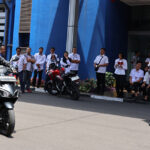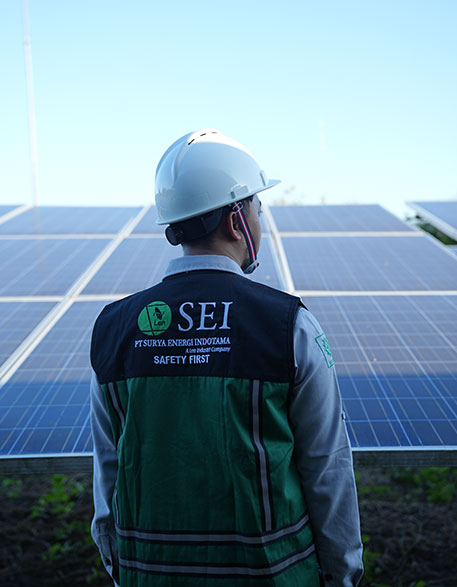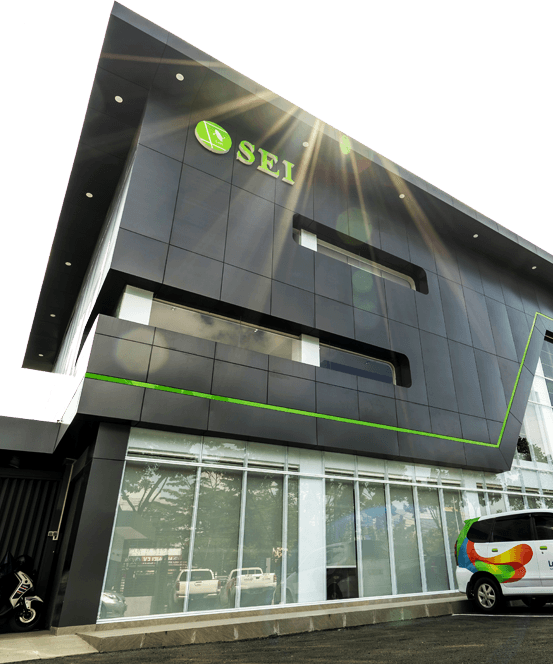Tag: HSE
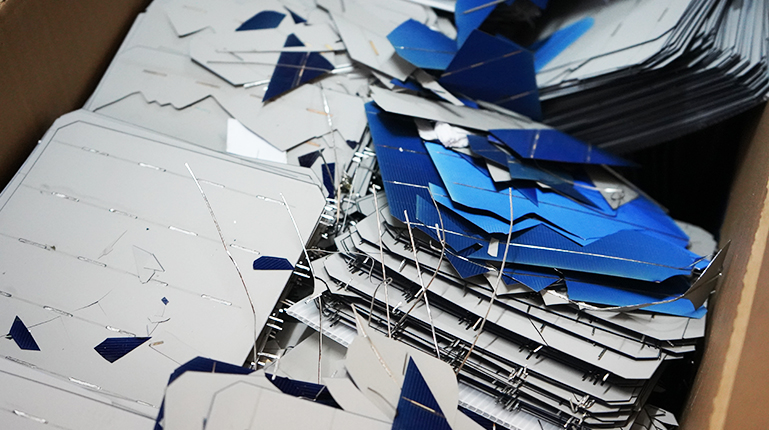
It Turns Out This Is How Solar Panel Waste Management Works
With the increasing development of renewable energy technology, solar panels have become one of the main solutions to reduce dependence on fossil fuels. PT Surya Energi Indotama (SEI), as one of the Pioneers in the new and renewable energy industry, especially solar energy in Indonesia, is committed to managing waste from solar panels in an environmentally friendly manner and in accordance with applicable regulations.
In the process of producing and using solar panels, there are several types of Hazardous and Toxic Materials (B3) waste produced, including:
1. Solar Cell Reject
Solar cells that do not meet quality standards and cannot be used in solar panels. These cells often contain hazardous chemicals such as silicon and heavy metals. In addition, they are categorized as B3 waste because their sharp texture can be dangerous and injure those who hold them if they do not use special gloves.
2. Flux and Riz
Chemicals used in the soldering process and manufacturing of solar panels. Flux containing hazardous chemicals can become B3 waste if not managed properly such as after its expiration date has expired which can cause irritation.
3. Backsheet
The protective back sheet of a solar panel is made of plastic or composite material. Unused backsheets contain chemicals that can pollute the environment.
4. Tin Metal
Used in soldering processes and as a component in solar panels. Tin metal in waste can potentially pose health and environmental risks if not managed properly and takes a long time to decompose if simply thrown away.
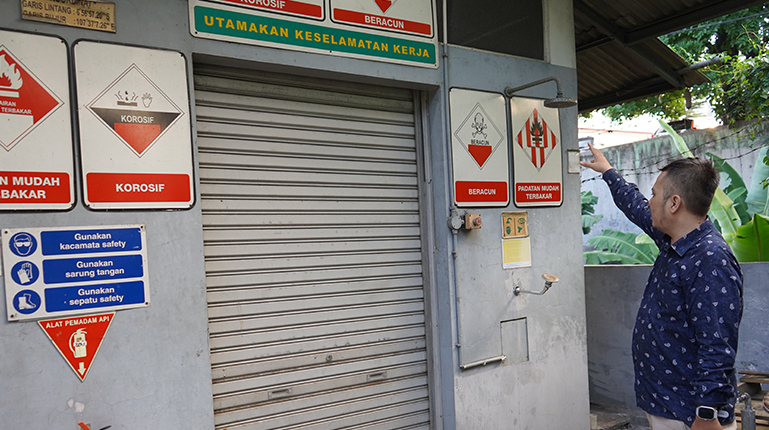
B3 Waste Management
PT Surya Energi Indotama has implemented strict B3 waste management procedures to ensure that solar panel waste is handled in a proper manner and minimizes negative impacts on the environment. The following are the main steps in B3 waste management:
1. Sorting and Collection
Waste from solar panels is sorted based on its type and characteristics. Reject solar cells, flux and riz, backsheet, and tin metal are collected in special containers according to their type.
2. Handling and Storage
After being sorted, B3 waste is stored in a temporary storage area (TPS) that meets safety and environmental standards. This TPS is designed to prevent contamination and leakage that can harm the environment.
3. Processing and Recycling
The collected B3 waste will be further processed for processing or recycling. Solar cells that are no longer usable may be processed to extract valuable materials or sent to a licensed hazardous waste treatment facility.
4. Reporting and Documentation
PT Surya Energi Indotama routinely reports the amount of B3 waste produced and managed to the authorities. This documentation is important to ensure compliance with regulations.
After the storage period at the TPS, B3 waste will be transported by PT Prasadha Pamunah Limbah Industri (PPLI), which is a third party competent in B3 waste management. PPLI will take over the responsibility for transporting waste to the appropriate processing facility, ensuring that all steps are carried out in accordance with applicable regulations and standards.
The management of B3 waste from solar panels is an important aspect of PT Surya Energi Indotama's environmental responsibility. By following strict procedures in waste sorting, collection, storage, and processing, the company not only complies with existing regulations but also contributes to environmental protection efforts. Collaboration with PPLI for further transportation and processing ensures that B3 waste is handled in a safe and efficient manner.
Berita Lainnya
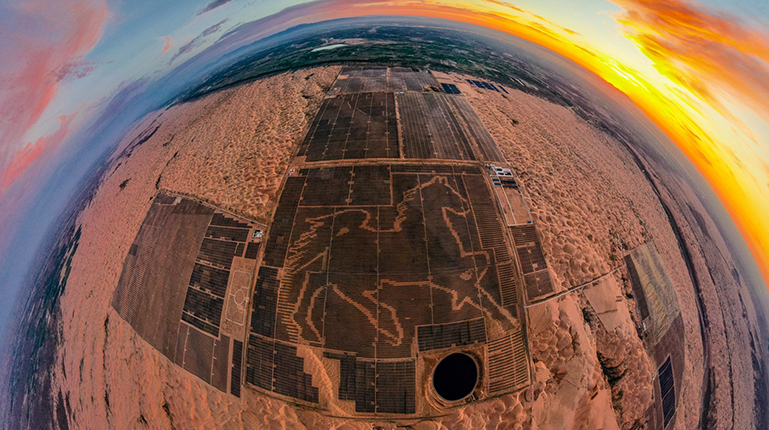
Diving into the Wonder of the Largest Solar Panel in the Kubuqi Desert, Inner Mongolia, China
In the middle of the vast Kubuqi Desert in Dalad Banner, Ordos, Inner Mongolia, China, there is an impressive solar panel installation. This installation is not only a symbol of the advancement of renewable energy technology, but is also able to provide enough electricity for 3,600,000 households every year.
The city of Ordos is famous for its natural resources, especially abundant coal and was once the city with the largest GDP per capita in China. However, with this Solar Power Plant, it can save 4.96 million tons of coal per year and reduce carbon dioxide emissions by 13.5 million tons per year.
The project, which has been started since 2017, is estimated to be completed in 2025. And if we talk about how big this project is, the scale of this solar panel installation covers a very large area, covering part of the dry and barren Kubuqi Desert. Its area reaches 18,600 hectares with a length of 400 km and a width of 5 km. This reflects the commitment to optimizing the available natural resources for renewable energy.
Behind the grandeur of the project built on the desert is not without challenges. This project reflects high technical skills in designing and building stable and sustainable infrastructure in harsh environments. Initiatives such as the installation in the Kubuqi Desert demonstrate China's leading role in adopting and promoting renewable energy as part of a national strategy to reduce the global carbon footprint.
The power generated after the entire project is completed in 2025 is estimated to be able to produce an installed capacity of up to 12 million kilowatts and can produce 24 billion kWh per year which means it can meet the electricity needs of 3,600,000 households in a year. Where the electricity will be distributed to the city of Cangzheu Hebei and Xiong'an New Area.
The installation of solar panels in the Kubuqi Desert, Inner Mongolia, China, is not only a technical achievement, but also a symbol of the global commitment to achieving energy sustainability and environmental protection. By continuing to push the boundaries of innovation, this project provides hope for a cleaner and more sustainable future for the whole world.
Source : Youtube Rudy Chen
Berita Lainnya
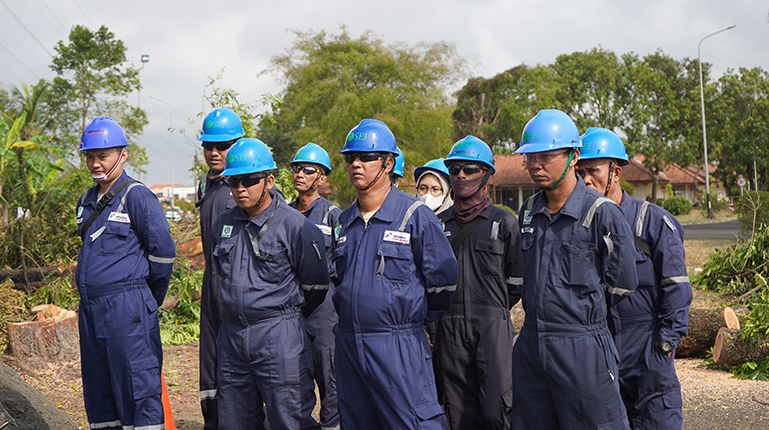
Toolbox Meeting: SEI’s Commitment to Maintaining Worker Safety and Security
Toolbox meeting is a meeting activity attended by all field workers involved in the form of a forum or briefing to discuss safety, security and control of hazards that may occur while working.
The toolbox meeting itself aims to ensure that the conditions of the work field are safe and under control, so that the work carried out runs smoothly and avoids unwanted incidents.
Here are some of the benefits of Toolbox Meeting:
- Safety Awareness: Toolbox meetings help raise awareness of safety risks in the workplace. By discussing potential hazards and appropriate precautions, team members become more aware of their work environment.
- Knowledge and Understanding: Toolbox Meetings provide an opportunity for team members to gain new knowledge about safe work procedures and actions to take in certain situations.
- Risk Identification: In the Toolbox Meeting, team members can share their experiences and knowledge about specific risks related to their work. This helps to identify potential risks that may occur and how to prevent them.
- Shared Commitment: By participating in Toolbox Meetings, team members demonstrate their commitment to workplace safety and health. This reinforces a culture of safety in the workplace and encourages collaboration in creating a safer work environment.
Taking these benefits into account, Toolbox Meeting becomes one of the important instruments in ensuring a safe and healthy working environment for all team members. In working on projects, SEI always routinely holds Toolbox Meetings in line with SEI's slogan, "Safety Is SEI Priority"
Berita Lainnya
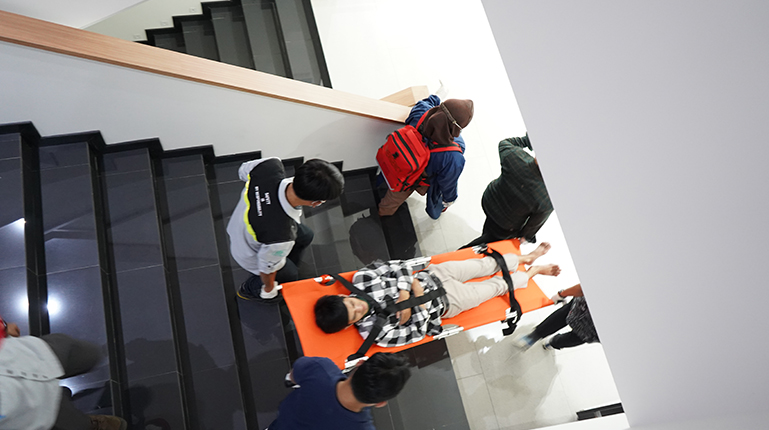
Emergency Response Simulation, Is It Important?
Some time ago, the HSE SEI team held an earthquake and fire emergency response simulation at different times. And do you know how important emergency response simulations or often known as Emergency drills are? Let's see the discussion this time!
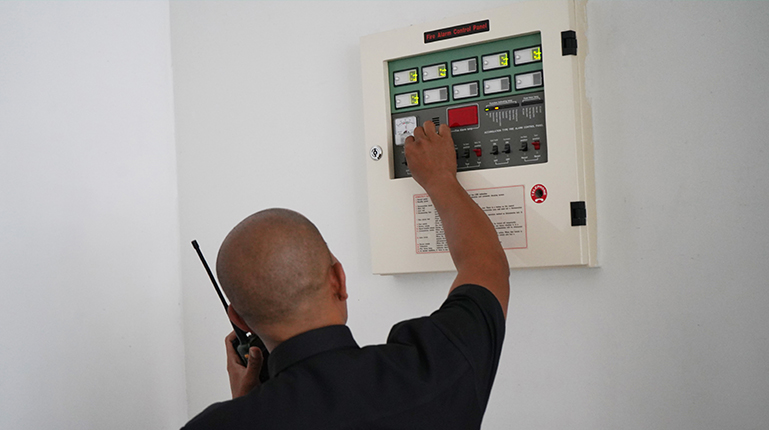
Emergency drill or Emergency Response Simulation
intended to facilitate and regulate the actions of the company and company employees during an emergency that occurs in the workplace and it is highly recommended for a company to do so. A well-developed and well-organized emergency plan and proper training for employees so that each employee can understand their role and responsibilities in emergency response simulation activities.
The implementation of emergency response simulations can minimize risks such as reducing serious injuries and reducing damage to company facilities during an emergency. Without good planning, of course, there will be many risks that the company faces such as a noisy atmosphere, unorganized resulting in confusion, injury, risk of disease due to exposure to chemicals, biology and/or radiation including damage to company property.
Of course we don't want that to happen, therefore the company through the HSE Team is very concerned and always schedules emergency drill programs every year. SEI as a company with hundreds of employees is certainly required to have an operational plan, especially in anticipating emergency actions, which plan must include:
- Preferred methods and/or procedures for reporting fires and other emergencies;
- Emergency procedures and route planning, such as floor plans, workplace maps, and safe or protective areas;
- Procedures for accounting for all employees after an evacuation, such as determining assembly locations, for example, safe areas or shelters;
- An officer or person in charge either inside or outside the company who can be contacted for additional information or explanation of duties and responsibilities based on the emergency plan;
- Procedures for employees who continue to perform or shut down essential installation operations, operate fire extinguishers, or perform other essential services that cannot be stopped for any emergency alarm prior to evacuation;
- Rescue and medical duties for each employee appointed to carry them out;
- Designate one or more emergency contact persons who are knowledgeable about the hazards and processes at the facility and ensure their contact information is readily accessible during an emergency;
- Designate employees responsible for inventorying and maintaining emergency equipment and supplies;
- Include a description of the alarm system in the emergency plan that will be used to notify all employees to evacuate and take other actions. The alarm sound used for the action must be different from other types of alarms such as horns, sirens, or even public address systems;
- Identifying the location of alternative communications facilities to be used if primary facilities are inaccessible due to an emergency, such as fire or explosion;
- Keep original or duplicate copies of important company documents in a secure location on or off site.
So, if all plans for emergency drill activities or emergency response simulations have been carried out in sequence according to applicable guidelines, then the next stage that you need to know is how to successfully conduct emergency drills, let's look at the discussion again:
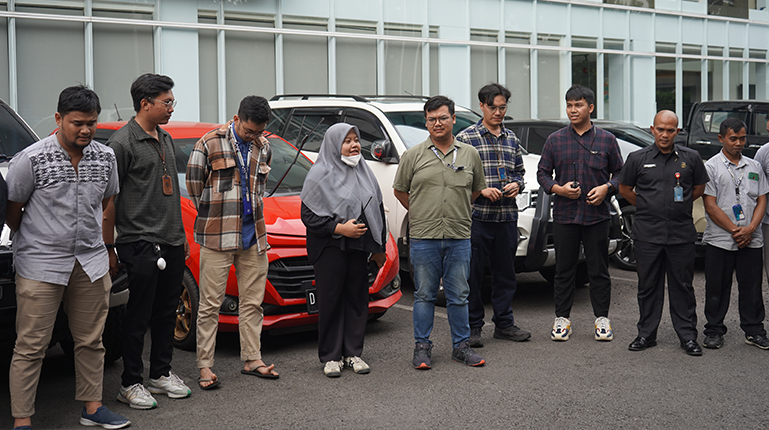
Tips for Conducting a Successful Emergency Drill
Conducting an effective emergency drill involves more than just sounding the alarm and directing employees to exit the building. Here are some tips we can follow to ensure that the emergency drill is successful and beneficial:
- Realistic and relevant scenarios
The type of emergency drill must be relevant to the place and location of the company, for example, if the company is located in an earthquake-prone area, then conducting an earthquake drill is the right action or if the office space has a high-rise building, then a fire drill that includes evacuation procedures via stairs will be very important, etc.;
- Clear Communication
Provide instructions before, during, and after the emergency response drill. This includes letting everyone know that the drill is taking place, the scenario, and what is expected of them. After the drill, provide feedback on how the drill went and what improvements can be made.
- Surprise Exercise
While scheduled drills are important, surprise drills can be even more effective in preparing employees for emergencies. They can help identify real-time challenges and areas of confusion that need to be addressed;
- Involve Everyone
All employees should participate in drills to ensure they understand emergency procedures, from top management to lower-level employees;
- Designated Role
Assign specific roles to employees, such as floor coordinator, first aid officer, etc. This is to ensure that essential tasks are carried out and to give individuals a sense of responsibility during emergencies.
- Test Multiple Scenarios
Don’t limit yourself to one type of emergency. While fire drills are common, it’s also important to conduct drills for other scenarios such as earthquakes, floods, or other situations that are appropriate to your company’s location and type of business;
- Briefing, Learn and Feed Back
After the emergency response simulation exercise is held, the simulation activity can be continued with a question and answer session and discussion as evaluation material, including asking for feedback from employees as valuable input and insight for the smooth running of the emergency response simulation activity;
- Update Emergency Plan
Always update the company's emergency plan that has been prepared according to the development and condition of the company, such as updating evacuation routes, improving communication methods, or providing additional training to employees.
The tips above will support the smooth implementation of emergency response exercises, and what needs to be emphasized in this activity is that cooperation between all parties is certainly the main point to achieve the expected success.
The need for awareness from company management to employees about the importance of emergency drill activities must always be fostered, safety is the main point of the company in carrying out its activities and is the responsibility of all members of the community in it …. Safety is SEI priority!


